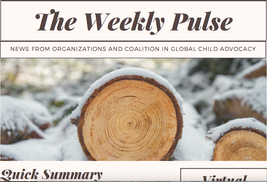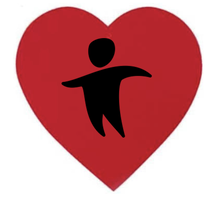The Children’s Policy and Funding Initiative seeks to elevate critical issues affecting children and youth globally and make issues affecting them a top priority in our government's policy, programming and funding. Around the world, the hardships children and youth face have intensified and reversed years of progress. An entire generation at stake.
Research is clear. Children's exposure to such severe abuse, insecurity, isolation, and trauma can have longterm consequences on physical, psychological, and social well-being and lead to broader economic and security consequences for societies and nations. More than ever, investments in children and youth are critical for our future.
COVID, climate, and conflict have had a devastating effect on children and youth around the world. This is especially true for those living in under-resourced parts of the world where the confluence of challenges is undermining decades of progress to improve their well-being. At a time of great global challenges, the Children’s Policy and Funding Initiative seeks to prioritize the needs of children and youth globally, especially in government foreign assistance.
There is a fourth "C" - Children - whose critical needs and voices cannot be forgotten on the list of global priorities. Governments must act now to prioritize investments in the education, care, health, and safety of children and youth. To improve investments and ensure best outcomes, governments must adopt an intentional approach to policy, programming, and funding decisions that systematically considers the needs of children holistically through their life course, and they must solicit direct input and participation from young people and affected populations.
Research is clear. Children's exposure to such severe abuse, insecurity, isolation, and trauma can have longterm consequences on physical, psychological, and social well-being and lead to broader economic and security consequences for societies and nations. More than ever, investments in children and youth are critical for our future.
COVID, climate, and conflict have had a devastating effect on children and youth around the world. This is especially true for those living in under-resourced parts of the world where the confluence of challenges is undermining decades of progress to improve their well-being. At a time of great global challenges, the Children’s Policy and Funding Initiative seeks to prioritize the needs of children and youth globally, especially in government foreign assistance.
There is a fourth "C" - Children - whose critical needs and voices cannot be forgotten on the list of global priorities. Governments must act now to prioritize investments in the education, care, health, and safety of children and youth. To improve investments and ensure best outcomes, governments must adopt an intentional approach to policy, programming, and funding decisions that systematically considers the needs of children holistically through their life course, and they must solicit direct input and participation from young people and affected populations.
|
Download the Joint Proposal for a White House-led Initiative for Children and Youth Globally: HERE. For more information on advocacy priorities, also visit: agenerationatstake.org |
|
|
White House Proposal
Joint Proposal for White House-led Initiative for Children and Youth Globally
|
|









